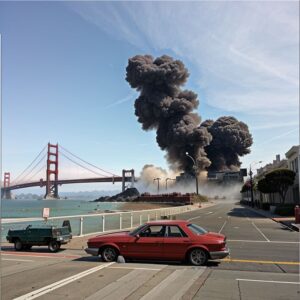In the early hours of April 18, 1906, San Francisco was shaken awake by one of the most devastating earthquakes in American history. The ground rumbled violently as buildings crumbled, streets split open, and terrified residents fled into the chaos. The quake, estimated at a magnitude of 7.9, lasted less than a minute, but its destruction would haunt the city for years to come. However, the shaking was only the beginning. Fires soon erupted across San Francisco, fueled by broken gas lines and a lack of water to fight the flames. For three days, the city burned, reducing entire neighborhoods to smoldering rubble.
The destruction was unimaginable. Over 80% of San Francisco was leveled, and nearly 3,000 people lost their lives. Hundreds of thousands were left homeless, forced to seek shelter in makeshift camps. The once-thriving city had been transformed into a landscape of ashes and despair. But amid the devastation, there was resilience. Volunteers worked tirelessly to rescue survivors, and efforts to rebuild the city began almost immediately.
The tragedy exposed the weaknesses in San Francisco’s infrastructure and emergency response, leading to major reforms in building codes and disaster preparedness. In the years that followed, the city emerged stronger, determined never to suffer such catastrophic losses again. Today, the 1906 earthquake remains a defining moment in San Francisco’s history—a reminder of nature’s power and human perseverance.
More than a century later, the scars of that disaster have faded, but its lessons remain. Advances in seismology and engineering have made cities safer, yet the risk of another major earthquake still looms over the region. The Great San Francisco Earthquake was a tragedy, but it also proved that even in the face of unimaginable destruction, a city and its people can rise again.

